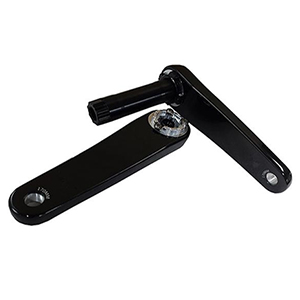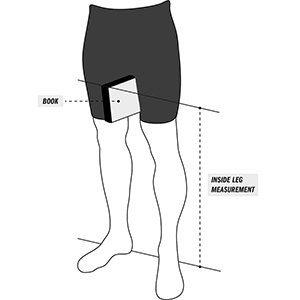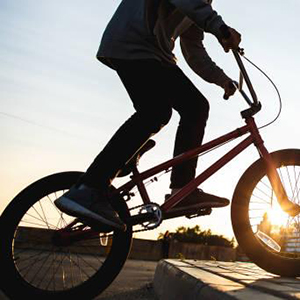
How To Choose Crank Arm Length
Crank arm length might seem like a small detail, but it can change how your bike feels and performs. The right length helps you pedal more smoothly and ride more comfortably. If you’re thinking about upgrading your setup, a pair of Carbon cranks can make your bike lighter and easier to handle. Let’s look at how to choose the crank length that fits you best.

Why Crank Arm Length Matters and the Benefits of Adjusting It
Getting your crank arm length right can make your bike feel more natural and easier to ride. The crank arms connect your pedals to the drivetrain, so their length affects how your legs move with every stroke. A crank that’s too long or too short can make pedaling feel awkward, waste energy, and even cause joint pain over time.

Understanding Standard Crank Arm Lengths
Most bikes come with standard crank arm lengths, usually between 165mm and 175mm. These sizes are chosen because they fit the average rider, but they may not work perfectly for everyone. Road bikes often use 170mm or 172.5mm cranks, while mountain bikes tend to have slightly shorter ones to help with quick pedaling and better ground clearance.
If you’re taller or have longer legs, a longer crank arm might give you more leverage. On the other hand, shorter riders often find shorter cranks more comfortable and easier on the knees.
How to Measure Your Leg and Inseam for Crank Selection
Finding the right crank arm length starts with knowing your body measurements, especially your inseam. This helps you choose a crank that matches your leg movement and gives you a more natural pedaling rhythm.
Step 1: Measure Your Inseam
Stand barefoot with your back against a wall. Place a book or a flat object between your legs, pressing it gently upward to mimic your bike saddle. Use a tape measure to check the distance from the floor to the top of the book. This number, in centimeters, is your inseam length.

Recommended Crank Lengths for Different Bike Types
Different types of bikes use different crank arm lengths to match their riding style and terrain. Knowing what’s common for your bike type helps you start with a good baseline before making fine adjustments.
Road Bikes
Most road bikes come with crank lengths between 170mm and 175mm. If you’re taller or prefer powerful pedal strokes on flat roads, a longer crank can help. Shorter riders often feel more comfortable with 165mm or 170mm cranks, which make it easier to maintain a steady cadence on climbs and during long rides.
Mountain Bikes (MTB)
Mountain bikers often choose shorter cranks, around 165mm to 170mm. Shorter arms help reduce pedal strikes on rough trails and improve control when riding technical terrain. They also make it easier to spin faster on steep climbs.
Gravel and Touring Bikes
These bikes usually fall between road and MTB setups, using crank lengths from 170mm to 172.5mm. The goal is to balance comfort, endurance, and smooth pedaling over mixed terrain.
BMX and Track Bikes
BMX bikes use much shorter cranks, typically 160mm to 165mm, allowing quick acceleration and better clearance. Track bikes, on the other hand, might use slightly longer cranks for more power on smooth surfaces.

Signs Your Crank Arm Length May Be Wrong
It’s easy to overlook crank arm length, but if it doesn’t fit your body, you’ll feel it while riding. Paying attention to how your body responds can help you spot the warning signs early.
Knee or Hip Discomfort
If your crank arms are too long, your knees may bend too much at the top of each pedal stroke. This can cause pain in your knees or hips, especially during long rides or climbs. Cranks that are too short, on the other hand, can make your legs feel cramped and limit your power output.
Uneven Pedaling or Fatigue
You might notice that one leg feels stronger or more tired than the other. Incorrect crank length can throw off your pedaling rhythm and make it harder to maintain even power throughout each rotation.
Reduced Efficiency or Awkward Ride Feel
If your pedal strokes feel heavy or forced, or if your saddle height feels off no matter how much you adjust it, your crank arms might not match your leg length. When the crank length fits correctly, your pedaling should feel smooth, natural, and effortless.
Testing and Adjusting Crank Arm Length in Real Rides
Once you’ve chosen a crank length that seems right on paper, the next step is testing it in real-world conditions. You’ll quickly learn whether your chosen crank arms feel natural or if they need further adjustment.
Start with Short Test Rides
Begin by taking your bike for short rides on familiar routes. Pay attention to how your legs feel—especially your knees and hips. If the crank arms are too long, you might feel extra strain when pushing hard on climbs. If they’re too short, you might notice your cadence feels unusually high or you’re not getting enough leverage.
Evaluate Comfort and Power
During your test rides, focus on comfort and pedal smoothness. A correct crank length allows your legs to move naturally without overreaching or feeling cramped. You should be able to pedal efficiently without bouncing in the saddle. If you notice uneven power or fatigue in specific muscles, it’s a sign that the length might need tweaking.
Make Small Adjustments
If something feels off, make gradual changes instead of big jumps. Try adjusting saddle height or position before swapping crank arms completely. Even a few millimeters can make a big difference in how you pedal.
Advanced Considerations for Power and Efficiency
Once you’ve found a comfortable crank arm length, you can take things a step further by fine-tuning for maximum power and pedaling efficiency. This part goes beyond just comfort—it’s about getting the most performance out of every pedal stroke.
Matching Crank Length to Cadence
Crank length affects your cadence, or how fast you spin the pedals. Shorter crank arms generally allow a higher cadence, which can reduce fatigue during long rides. Longer crank arms create more leverage but might slow your rhythm. If you prefer spinning quickly, shorter cranks may suit you better; if you rely on slow, powerful strokes, longer ones could work.
Considering Power Output
Your power output isn’t just about muscle strength—it’s about how efficiently that strength transfers to the pedals. The right crank length keeps your knees and hips in a strong, natural position. When the length is off, you may lose power at the top or bottom of your stroke, even if you’re pushing hard.
Balancing Aerodynamics and Comfort
For road cyclists and time trial riders, crank arm length can also influence aerodynamics. Shorter cranks let you maintain a lower, more compact position on the bike, which can reduce drag. However, you should never sacrifice comfort completely for a slight aerodynamic gain. A balanced setup helps you stay efficient and strong for the whole ride.
In short, the ideal crank length is more than fit; it’s about how your body moves, your riding style, and your goals. Fine-tuning these details helps you pedal smoother, ride longer, and perform at your best.
Common Mistakes and Misconceptions About Crank Length
Many cyclists assume that longer cranks automatically give more power or that shorter cranks are always better for spinning fast. These ideas are only partly true and can lead to discomfort or inefficient pedaling if applied blindly.
“Longer Cranks = More Power”
It’s true that longer crank arms give more leverage, but only if they fit your body. If your cranks are too long for your leg length, you may actually lose power because your muscles aren’t working in their most efficient range. Overreaching can also cause knee or hip pain over time.
“Shorter Cranks Are Always Easier”
Short cranks can help you spin faster and avoid pedal strikes on technical trails, but using them without considering your leg length or riding style can reduce leverage and make climbs harder. The goal is balance, not extremes.
Ignoring Your Body’s Feedback
Some riders stick with standard crank lengths because “everyone else uses them.” This can lead to discomfort or inefficient pedaling. Paying attention to how your legs, knees, and hips feel is the best guide for choosing the right crank length.
Overcomplicating Adjustments
You don’t need to obsess over tiny millimeters. Small adjustments—combined with proper bike fit, can provide big improvements in comfort and efficiency without overthinking every detail.
By understanding these misconceptions, you can make smarter choices, avoid unnecessary pain, and get the most out of your riding.
Conclusion
Picking the right crank arm length isn’t just about numbers, it’s about how your legs move and how your bike feels. The right crank length keeps your knees and hips comfortable, lets you pedal efficiently, and helps you maintain power on climbs and flats. Choosing a set of lightweight Carbon cranks designed for your bike type can make pedaling smoother and improve overall control. By testing different lengths and paying attention to how your body responds, you can find the perfect setup for more comfortable and effective rides.
Categories
New Blog
Copyright © 2025 Top-Fire Carbon Technology Co., Ltd. All Rights Reserved. Power by

IPv6 network supported